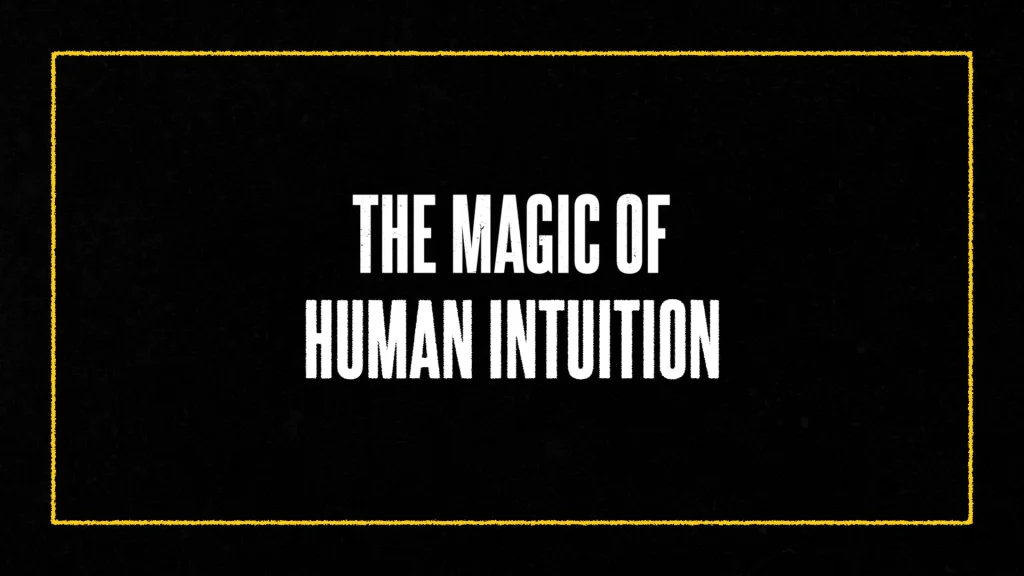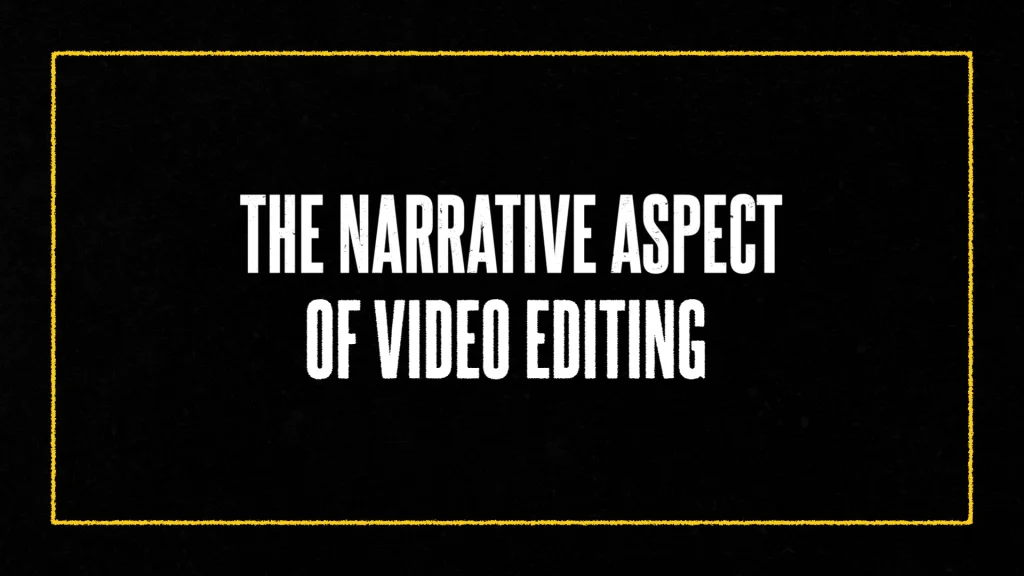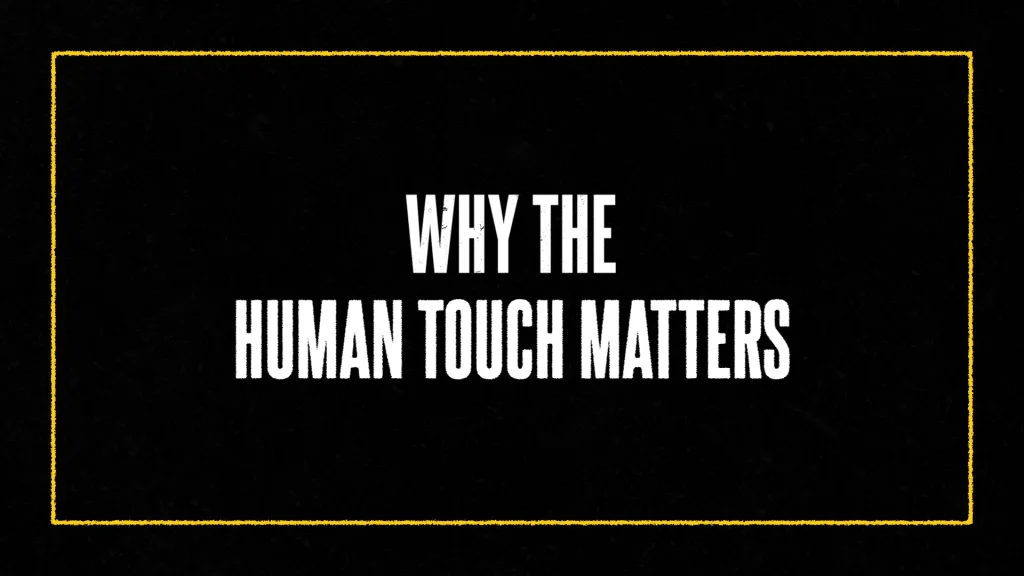Can AI (Artificial Intelligence) tell a story that touches the heart just as deeply as a human can? Read the blog post to find the answer.
As technology advances, AI has made significant progress in various creative fields, including video editing. It’s capable of cutting, splicing, and even suggesting edits based on algorithms.
But when it comes to the narrative aspect of storytelling, can it truly replace the human touch?
In this blog post, you’ll learn why human intuition, emotion, and creativity remain at the core of storytelling, things that AI, with all its brilliance, cannot fully replicate.
The Magic of Human Intuition

Have you ever had a “gut feeling” about something? That’s intuition.
It’s like an inner voice that guides us, especially when we tell stories. Why is intuition so important for storytelling, and why can’t a computer do the same thing?
Picture a writer sitting in front of a blank computer screen. Their head is full of ideas, feelings, and memories. Then, suddenly, they get a great idea. It doesn’t come from studying or thinking hard; it just pops into their head out of nowhere. This is what we call intuition.
Think about the stories or movies that stick with us for a long time. These stories often start with a sudden spark of creativity from the storyteller.
For example, the idea for “Harry Potter” came to J.K. Rowling during a train ride. She didn’t get this idea by looking at data or trends; it just came to her, and she felt it was a story worth sharing.
On the other hand, computers and AI work by looking at a lot of information and seeing what usually happens. They can suggest ideas based on what’s popular or common, but they can’t just come up with something new out of the blue.
AI doesn’t get “gut feelings.”
Intuition is also key when choosing what parts of a story to tell or how to tell them in a way that feels right.
Sometimes, a storyteller picks one scene over another, not because it looks better technically, but because it just feels better. It’s these choices, made at the moment, that touch our hearts because they come from a real human understanding of what makes a great story.
The real magic of using intuition in storytelling is that it brings surprises and connections that feel very human. While AI can help with some parts of making a story, it’s the human touch that makes stories come alive and touch people deeply.
Emotion: The Heart of Storytelling

Why do some stories make us laugh, cry, or feel inspired? It’s all about emotions.
Emotions are what make stories come to life and connect with us. But can a computer understand and use emotions like humans do? Let’s find out.
When a storyteller shares a story, they are not just telling us events; they are sharing feelings. That’s because they know what it’s like to feel happy, sad, scared, or excited. They put these feelings into their stories to make us feel them too.
For example, think about a movie that made you cry or a book that made you feel like you could do anything. The people who made these stories didn’t just want to tell you something; they wanted to make you feel something. That’s because they understand emotions very well.
In the case of AI, It can do a lot of things. It can write stories based on patterns it learns from lots of books or movies.
But AI doesn’t really “feel” anything. It doesn’t get happy, sad, or scared.
It tries to understand emotions by looking at words people use when they are happy or sad, but it’s not the same as feeling those emotions.
This difference is why stories told by humans are so powerful. When a human tells a story, they can make choices based on what they have felt in their own life. They know just the right word to use or the best scene to show that will make us feel something deep inside.
So, even though AI can help with making stories by suggesting ideas or helping edit, it can’t replace the human touch.
The emotions we feel in stories, the ones that make us think about them long after they are over, come from the hearts and minds of people, not machines.
The heart of storytelling is emotion. It’s what makes stories stick with us, teach us something, or help us see the world in a new way. And that’s something only humans can do.
The Narrative Aspect of Video Editing

Have you ever wondered why some videos make you stay till the end, while others don’t catch your interest? A lot of it has to do with how the video is put together, which we call video editing.
But here’s a question: Can a computer understand the best way to tell a story through video? Let’s find out.
Video editing is like telling a story with pictures and sounds. It’s not just about cutting and joining clips. It’s about choosing the right moments that make the story feel real and touching.
Human video editors play a big role here. They decide which part of a video should come first, which should come next, and which music or sound effects to use.
All these choices help tell the story in the best way possible.
For example, think about a movie scene that made you hold your breath or a YouTube video that made you laugh out loud. The person who edited those videos made many small decisions that added up to that big effect.
They chose the perfect moment to switch from one scene to another or the right piece of music to play at just the right time. These choices are based on feeling and experience, something AI is still learning about.
AI in video editing can do some helpful things, like suggesting good cuts or even making basic edits. But, it’s not so good at understanding the deeper parts of storytelling.
It doesn’t really “get” why a certain scene makes us feel a certain way. That’s because it doesn’t have its own experiences or emotions to draw from. It can follow rules, but storytelling is more than just rules.
Human editors use their sense of story, their understanding of emotions, and their own experiences to make a video more than just a series of clips. They can feel the rhythm of the story, and know when to build tension and when to give a moment of relief.
This is a big part of what makes videos engaging and memorable.
So, while AI can help with the technical side of editing, the narrative aspect, the part that connects with viewers, still relies heavily on the human touch. It’s the understanding of human emotions and storytelling that makes a video truly stand out.
In the end, it’s all about telling stories in a way that connects with people, and that’s something humans are uniquely good at.
Why The Human Touch Matters

So, we’ve talked about intuition, emotions, and how humans make engaging stories and videos. But why is all this so important? Why the human touch can’t be replaced by computers when it comes to storytelling?
We humans are great storytellers because we live, feel, and dream. We know what it’s like to face challenges, to overcome them, or sometimes, to be overcome by them.
When we tell stories, we share a part of ourselves with others. This connection is something very special, something that AI, as smart as it is, doesn’t quite understand.
AI can analyze data, find patterns, and even create stories and videos based on what it has learned. But it doesn’t have its own experiences. It doesn’t know what it feels like to watch the sunrise after a long night or to hear a song that brings back memories.
These experiences are what make stories rich and full of life.
This doesn’t mean AI doesn’t have a place in storytelling. It can help us find new ways to tell stories. It can take care of routine tasks, giving humans more time to focus on the creative parts.
But when it comes to making stories that touch hearts and open minds, the human touch is irreplaceable.
The future of storytelling and video editing is exciting. With humans and AI working together, we can tell stories in ways we haven’t even imagined yet.
But no matter how advanced AI gets, the heart of storytelling will always need the human touch. It’s our experiences, emotions, and dreams that truly bring stories to life.
Cover Image by freepik

